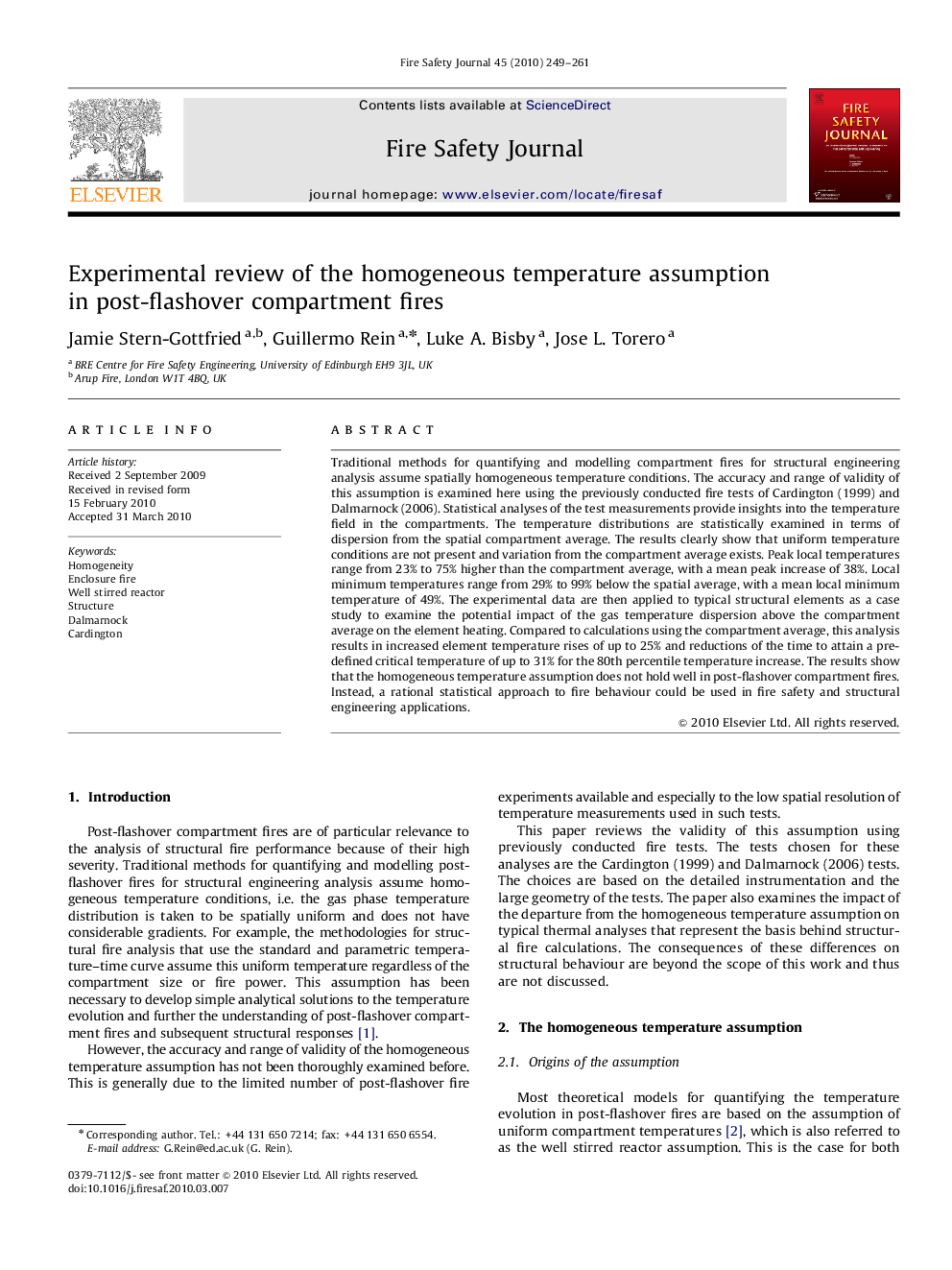| Article ID | Journal | Published Year | Pages | File Type |
|---|---|---|---|---|
| 270210 | Fire Safety Journal | 2010 | 13 Pages |
Traditional methods for quantifying and modelling compartment fires for structural engineering analysis assume spatially homogeneous temperature conditions. The accuracy and range of validity of this assumption is examined here using the previously conducted fire tests of Cardington (1999) and Dalmarnock (2006). Statistical analyses of the test measurements provide insights into the temperature field in the compartments. The temperature distributions are statistically examined in terms of dispersion from the spatial compartment average. The results clearly show that uniform temperature conditions are not present and variation from the compartment average exists. Peak local temperatures range from 23% to 75% higher than the compartment average, with a mean peak increase of 38%. Local minimum temperatures range from 29% to 99% below the spatial average, with a mean local minimum temperature of 49%. The experimental data are then applied to typical structural elements as a case study to examine the potential impact of the gas temperature dispersion above the compartment average on the element heating. Compared to calculations using the compartment average, this analysis results in increased element temperature rises of up to 25% and reductions of the time to attain a pre-defined critical temperature of up to 31% for the 80th percentile temperature increase. The results show that the homogeneous temperature assumption does not hold well in post-flashover compartment fires. Instead, a rational statistical approach to fire behaviour could be used in fire safety and structural engineering applications.
